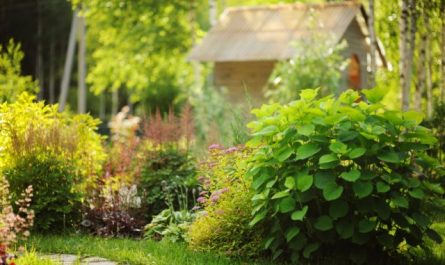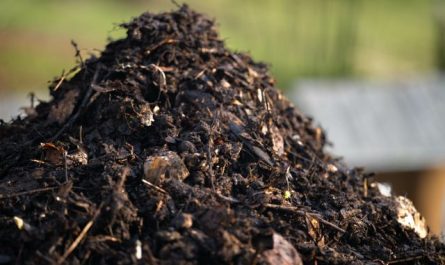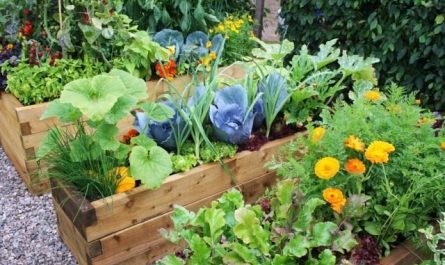I went to my neighbors, they had already managed to spray the whole garden (and I still keep trying) and all their trees now have a cheerful, soft blue color. It’s a Bordeaux mixture.
Initially, French peasants sprayed grapes with it to make them unnaturally colored and bitter – they did not steal them in this form. It turned out that the sprayed vines were also less affected by fungal diseases. And now it will soon be 150 years since the drug has been used in gardens and vegetable gardens. In the garden, of course, not only Bordeaux mixture is used. The range of gardeners is from “kill them all!” to “let it live as it pleases!” Let’s consider different options for spring treatments within reason and taking into account updates.

Episode 1. People vs. Mushrooms
Since Bordeaux mixture is about to celebrate its anniversary, let’s start with it. Bordeaux mixture (copper sulfate + lime) is a preventive fungicidal (against fungi) and bactericidal agent. Pathogens do not develop a tolerance to it.
Spraying should be done at the very beginning of the growing season before the buds open, at a temperature of +5 °C. This is the earliest spring treatment and, perhaps, the most important in the fight against fungal and bacterial diseases.
Instead of Bordeaux mixture, you can use a 3% solution of copper sulfate, but only before the bud opening stage. The solution has high acidity, which is slaked by lime in Bordeaux mixture.
As another alternative to Bordeaux mixture, you can use Burgundy liquid, where lime is replaced with soda ash. Dissolve 5 g of copper sulfate in 150 liters of warm water, 5 g of soda ash and 150 g of grated laundry soap in another 15 liters. When mixing, pour the copper sulfate solution into the soda solution and stir vigorously.
Copper-based preparations used at the same time and with similar effects:
- “Abigail Peak”,
- “Raw”,
- “Kuproxate”,
- “Indigo”.
Treatment with these preparations requires special care, since they do not penetrate into the plant (contact), but remain on the surface and destroy fungi and bacteria there.
It is better not to mix all of the above with anything (insecticides, fertilizers, fungicides of other nature), they do not get along.

If you are not sure about the thoroughness of the treatment, you can use contact-systemic preparations: “Chromoxyl”, “Oxychom”. They penetrate into the plant and will fight fungi and bacteria everywhere.
All these products are classified as hazard class 3 for both humans and bees, i.e. moderately hazardous. Therefore, treatments should be carried out in windless weather, protect skin, eyes and respiratory organs from contact with the products. And there is no need to increase the recommended concentration. It is better to spray as thinly as possible – it will be more effective.
For supporters of organic farming, at low positive temperatures, only ash infusion with the addition of laundry soap as an adhesive is available.
For spring spraying, pour 5 liters of hot water into a liter jar of ash and leave for a day. Strain, add 15 g of grated laundry soap diluted in warm water, combine everything, bring the volume to 10 liters. And spray. Also before the leaves bloom, because the solution has a strong alkaline reaction.
Episode 2: People vs. Bugs and Mushrooms
With the temperature rising to +15 °C, insecticide treatments begin. When it gets warmer, overwintered flower beetles, leaf rollers, codling moths and other unpleasant creatures come to the surface. The first generation of aphids hatches from eggs that overwintered on the tops of shoots. These are females – founders, who will start aphid colonies. So warming is the best time to destroy the parent stock.

To combat flying, jumping and crawling insects, the following are suitable::
- “Aktara”,
- “Fufanon”,
- “Alatar”,
- “Inta-vir”,
- “Decis”,
- “Karate”,
- “Novaction”,
- “Tsunami”,
- “Sharpey”,
- “Confidor”.
These preparations are moderately dangerous for humans (class 3) and dangerous for bees (class 1). It is advisable to carry out treatments after sunset or early in the morning before the start of the flight. Otherwise, there will be no one to pollinate the garden.
With the onset of warming, buds begin to form in stone fruits, it’s time to carry out the first spraying against moniliosis, “Horus” and “Horton” are well suited for this. They can be mixed with insecticides, you will get a 2-in-1 treatment: both against insect pests and against fungi with bacteria. In this case, you will have to spray thoroughly. Although “Horus” and “Horton” are systemic, that is, fungicides that penetrate the plant, insecticides are contact, working “on the surface”.
Those who do not want something chemical to penetrate into the plants in the garden and kill not only the harmful but also the useful, spray them with biological preparations.
At a temperature of +15 °C, the hay bacillus, which is contained in the preparations “Fitosporin”, “Alirin”, “Gamair”, already works well against bacteria and fungi. Also treat in the morning or evening. Insect pests and mites can be poisoned with “Bitoxibacillin”, “Fitoverm”.

There is an even more environmentally friendly option – spraying with aerated compost tea. Put a handful of soil from under a linden, maple, rowan, willow in a 3-liter jar. Add a piece of meadow turf the size of an egg, put a dessert spoon of old jam, pour all this with two liters of rainwater (or well or pond). Immerse the air sprayer of an aquarium compressor in there and turn on the compressor, let it work for a day. Filter the resulting liquid, put the thick part under vegetables (little by little), bring the volume of liquid to 5 liters and spray the fruit.
Control salvo
Before the first flowers bloom on stone fruits, the third treatment. Because the insidious moniliosis infects plants during flowering. Moreover, it does this most successfully in wet weather, so prolonged rains during flowering are a paradise for the fungus. And here, systemic preparations that penetrate the plant will definitely be needed. Contact ones (covering the plant from the outside with a protective film) are quickly washed off during the rainy season.
When repeating fungicide spraying, it is advisable to change the preparations. “Horus” for “Horton” (or vice versa) is not worth it – they have the same active substance. You can replace them with “Skor”, “Topaz”, “Topsin-M”, “Luna Tranquility”.
When spraying, it will be useful to add insecticides to the tank – insects drag the fungus spores everywhere with their dirty feet. The same requirements apply to insecticides: the active substance of the preparation must be different from what was used during the previous spraying. That is, if you sprayed with “Confidor” (neonicotinoids), then you should replace it with “Fufanon” (organophosphorus compounds). This is another reason to read the instructions.

Biopreparations for moniliosis are useful as a preventative measure, but it is quite problematic to eradicate moniliosis with them. As a preventative measure, in addition to the above, “Sporobacterin” is suitable, which contains hay bacillus and trichoderma. Or “Planriz” with the bacterium fluorescent pseudomonas. Biopreparations work at a temperature of +15 °C and above.
If there is moniliosis in the garden, and the weather is cool and drizzling, you will have to use Topsin, -M, Horus or Oxychom.
There are no restrictions on the use of aerated compost tea, but its protective and stimulating effect will also manifest itself at temperatures of +15 °C.
The choice of preparations always remains with the gardener – he (and his relatives) will have all this later! I would just like to warn everyone against exceeding the recommended doses and number of treatments. Instructions, they are written in blood. And diseases. Those who have encountered it know.



















